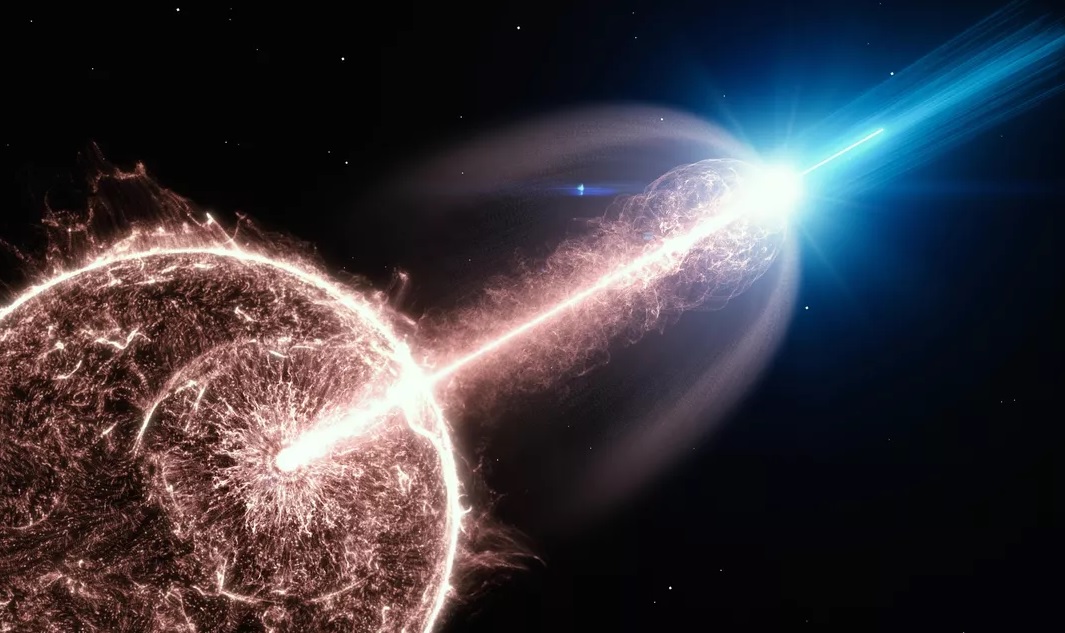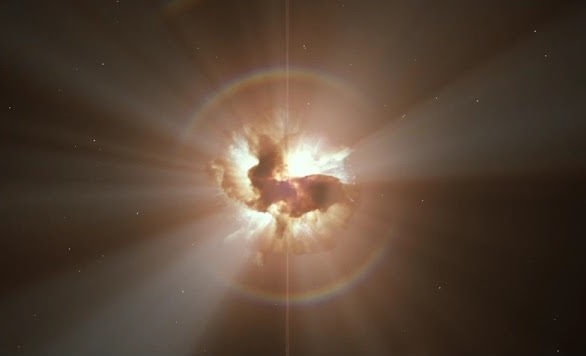Astronomers caught up with a nearby gamma-ray outburst (relatively speaking).

When certain stars die, they collapse, and supernovae become brilliant, causing light blows of gamma rays and X-rays called gamma rays. GBs have now witnessed one closer than before, which is a surprise for our knowledge of the vast blasts that can also give birth to black trout.Gamma-ray burst are regarded to be the most incredible explosions in the cosmos.
On 29 August 2019, NASA’s Satellites Fermi and Swift found a gamma-ray explosion in the direction of the Eridanus constellation. It was listed as GRB 190829A, and observatories throughout the world almost instantly moved to acquire further information about the cosmic event. The distance to view this incredibly violent display turned out to be roughly a billion light-years away—a manageable distance, but 20 times closer to earth than the average GRB. “We sit in the front row when the gamma-ray exploded,” Andrew Taylor of the Deutsches Elektronen-Synchrotron German Research Center stated in a statement.
The first chaotic blasting wave is generally less than a minute long, followed by a slower fading afterglow which can be observed for days. A GRB is shown in 2 stages. Taylor says that “might follow a few days and unparalleled gamma-ray energy during the second phase of GRB 190829A.” The energy scientists found in the record-breaking radiation are likely attributable to the relative proximity of the GRB.
Current knowledge of GRBs has been assumed to create the x-rays and gamma-rays from these explosions by independent mechanisms using various collisional particles (think a particle accelerator on Earth). The data from that extraordinary GRB indicates that it uses the identical process to create its X-ray and Gamma-ray components. “It’s unlikely,” says Rikkyo University’s Dmitry Khangulyan in Tokyo. The result published Thursday in the journal Science is co-authored by Khangulyan and Taylor. Finally, the record-breaking observation takes away that more can be learned and understood about GRBs.
“Because of the future, prospects are promising for the gamma-ray detection of next-generation instruments such as the current Cherenkov Telescope Array on the Canaries. And the Chilean Andes of La Palma,” said Specialist Stefan Wagner, Specialized Observatory for Namibia, GRB 190829, spokesperson for the High Energy Stereoscopic System in Namibia. And of course, I hope there are still many millions if not billions of light-years distant from Earth for future GRB detections. To keep up to date with all the latest news in space, follow CNET’s Space Calendar for2021. You may even add it to the Google calendar yourself.





